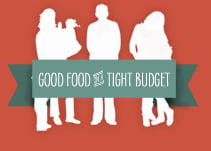
Fruits
 apricot
apricot avocado
avocado banana
banana  cantaloupe
cantaloupe grapefruit**
grapefruit**  honeydew
honeydew kiwi
kiwi orange juice*
orange juice*  nectarines domestic
nectarines domestic  papaya
papaya pear
pear  starfruit
starfruit tangerine
tangerine watermelon
watermelon  Peaches are also nutritious but may have more pesticides than other fruits. Check prices for organic.
Peaches are also nutritious but may have more pesticides than other fruits. Check prices for organic.**On medicine? Ask your doctor about grapefruit.
Dried Fruits
 apricots
apricots mango
mango california raisins
california raisins  prunes
prunes  Dried apples are also nutritious but may have more pesticides than other fruits. Check prices for organic.
Dried apples are also nutritious but may have more pesticides than other fruits. Check prices for organic.
Top tips
See EWG's Shopper’s Guide to Pesticides in Produce to learn more.
Love lemons. Put lemon juice in your salad dressing. Cook fish on a bed of lemon slices to add flavor and moisture and keep your pan clean.
Cut and freeze fresh fruit
when it's on sale or overripe. Use later
in smoothies, oatmeal or yogurt (see recipes).
To eliminate clumping, lay pieces on a tray in the freezer or freeze
pureed fruit in ice cube trays. When frozen, transfer to a bag.
Snack smart

These healthy snacks average 44 cents per 1 cup serving— less than a postage stamp—and will power you up.

Snack on fruits and vegetables. You can get your five to nine servings a day for about the cost of a bus ride.
Apricots, bananas, pears and tangerines are great for lunch boxes (wrap apricots in a napkin to prevent bruising).
Make a fruit bowl. Slice up a kiwi and chop cantaloupe, watermelon, papaya (or have kids do it themselves with a spoon or melon baller) or starfruit (kids love the shape) into bite-size pieces. Fill a small container for lunches.
Try raw carrots, broccoli or snow peas as an afternoon snack. They are great dipped in hummus or bean dip (see recipes).

















